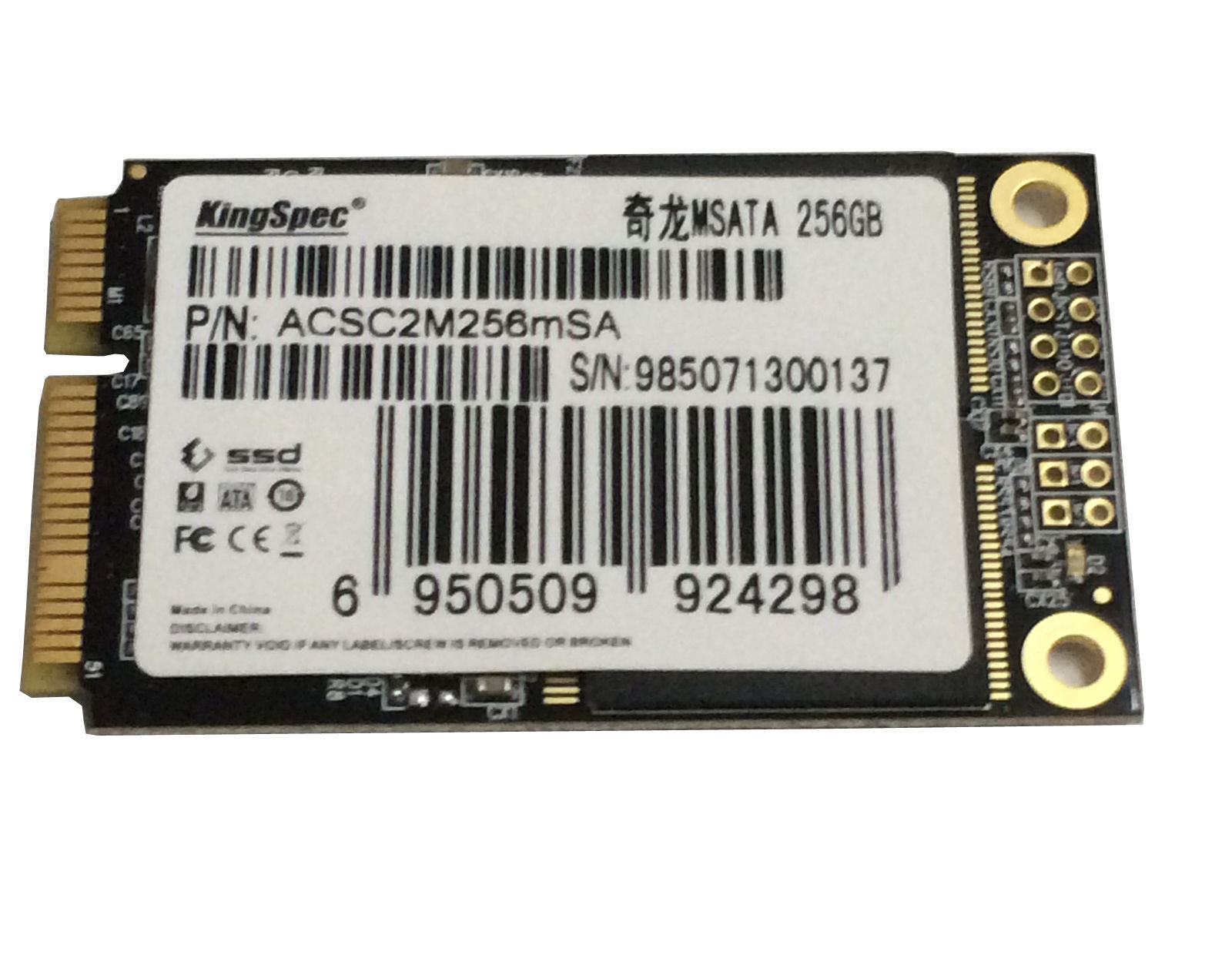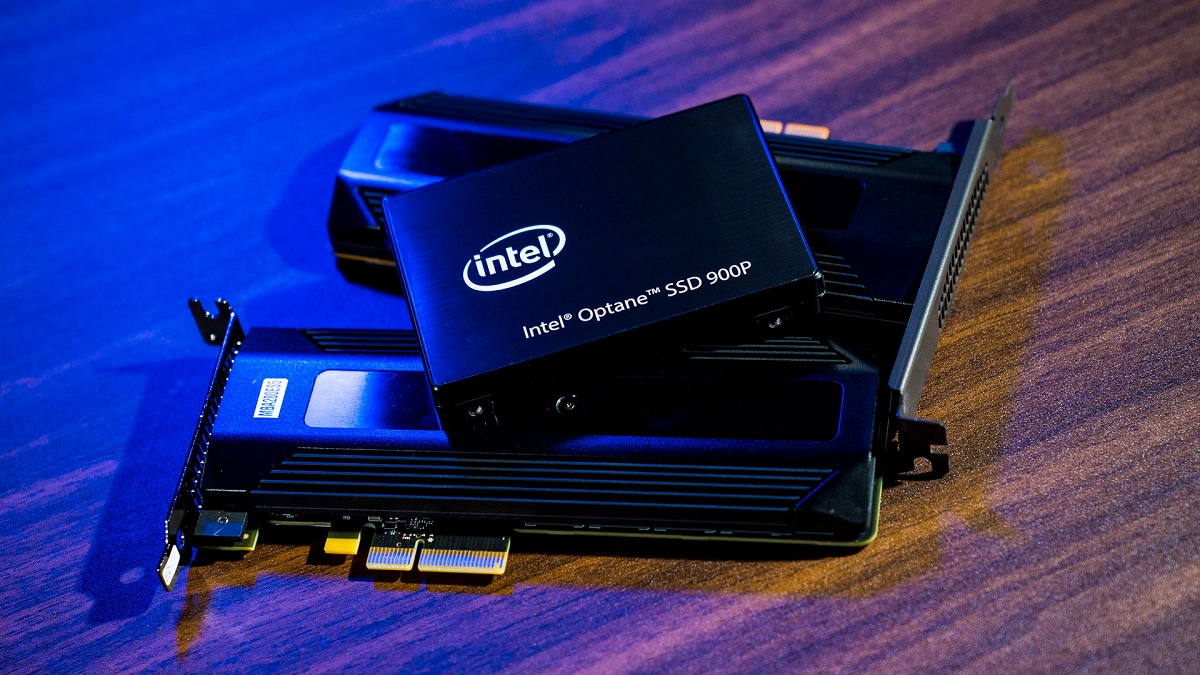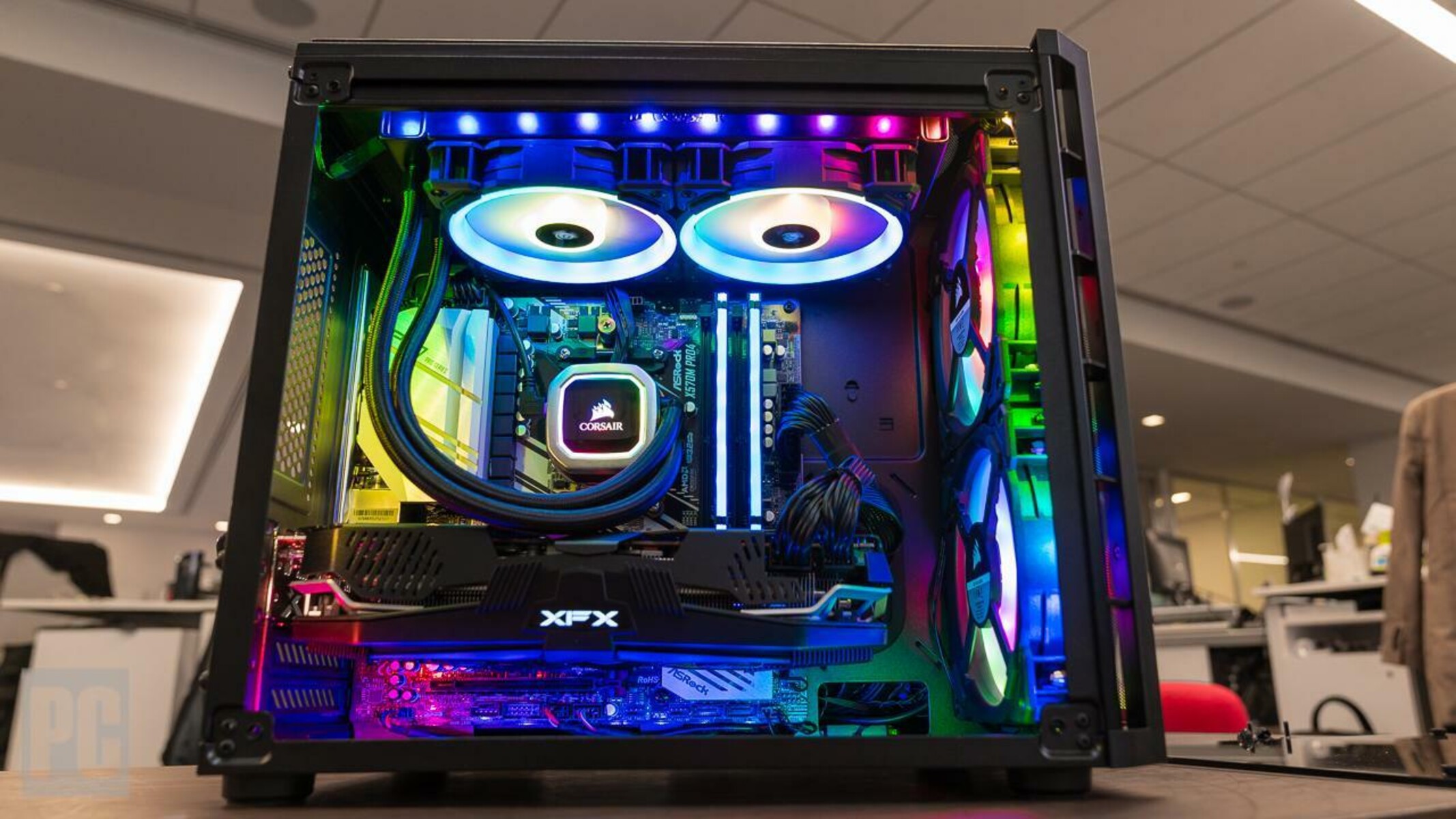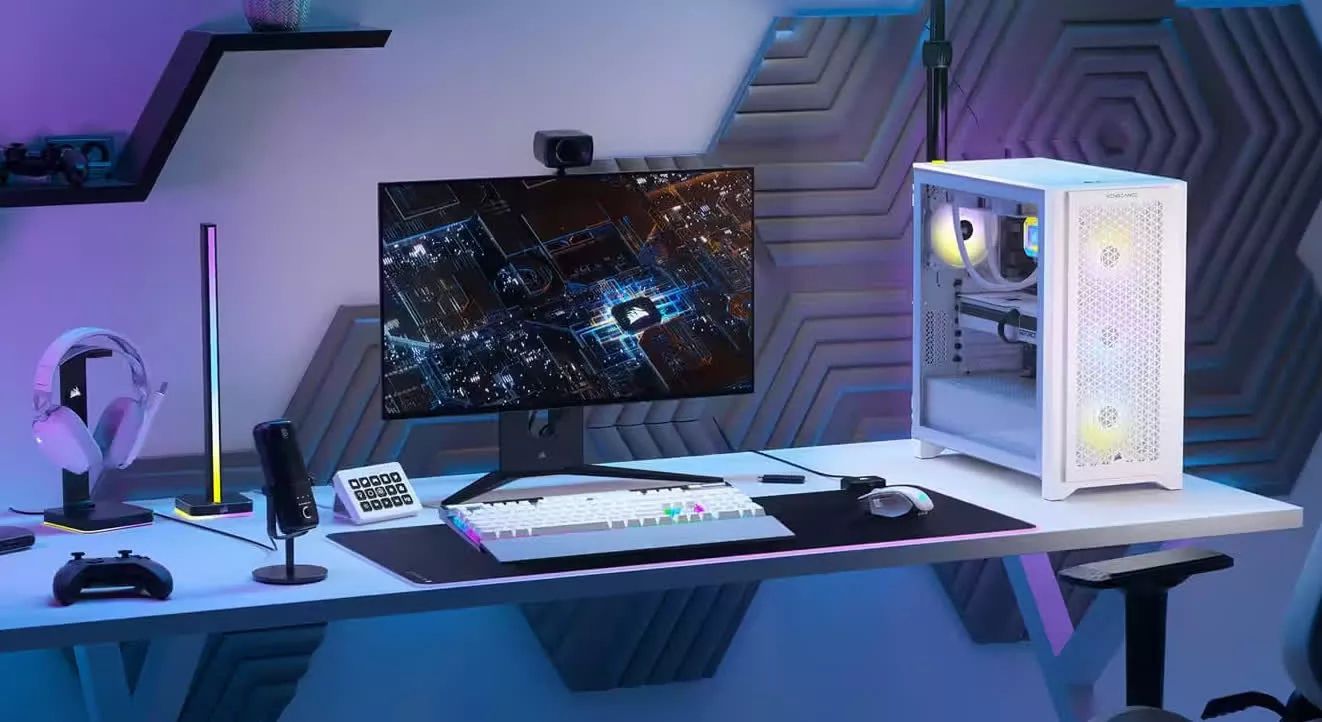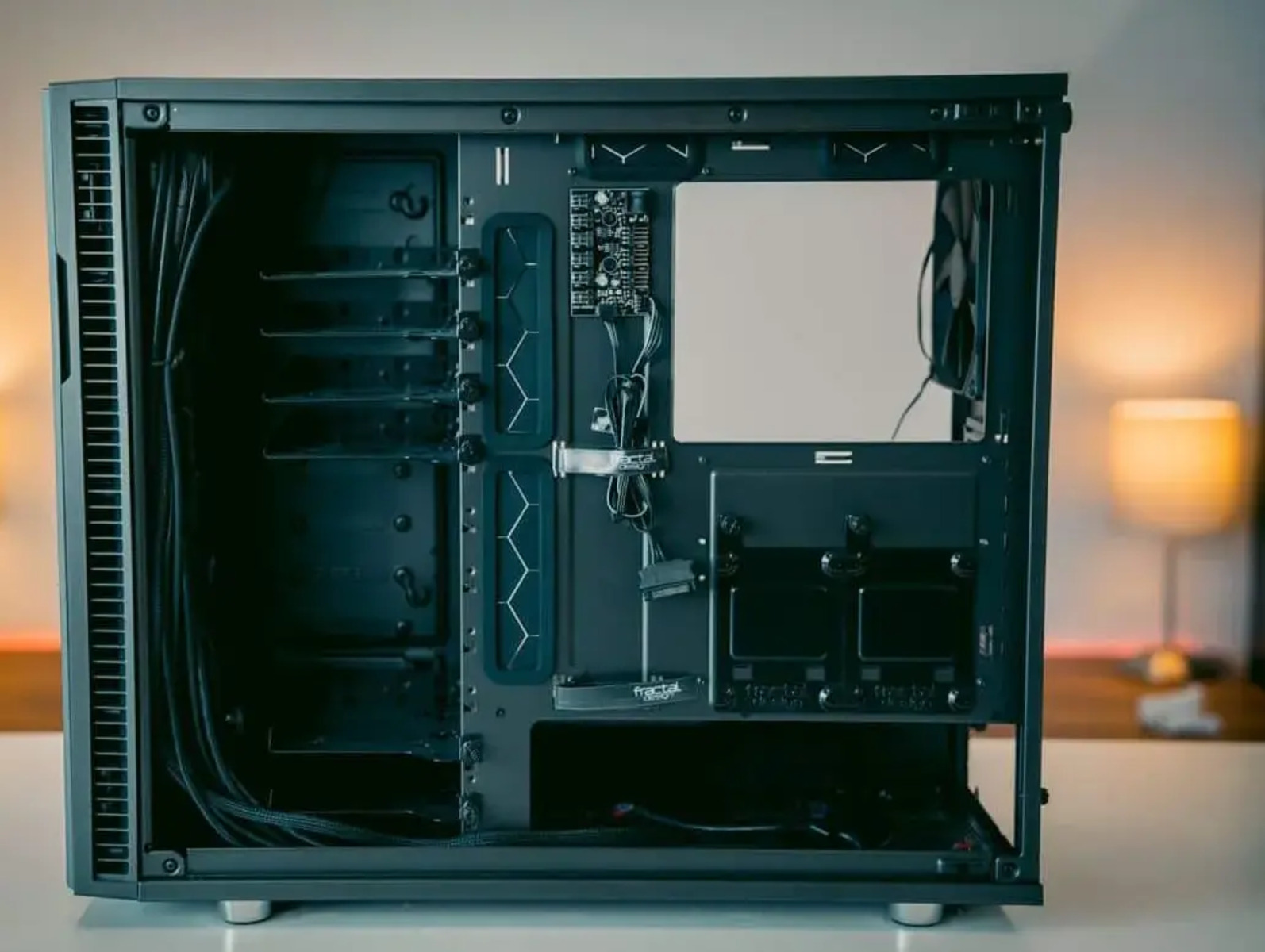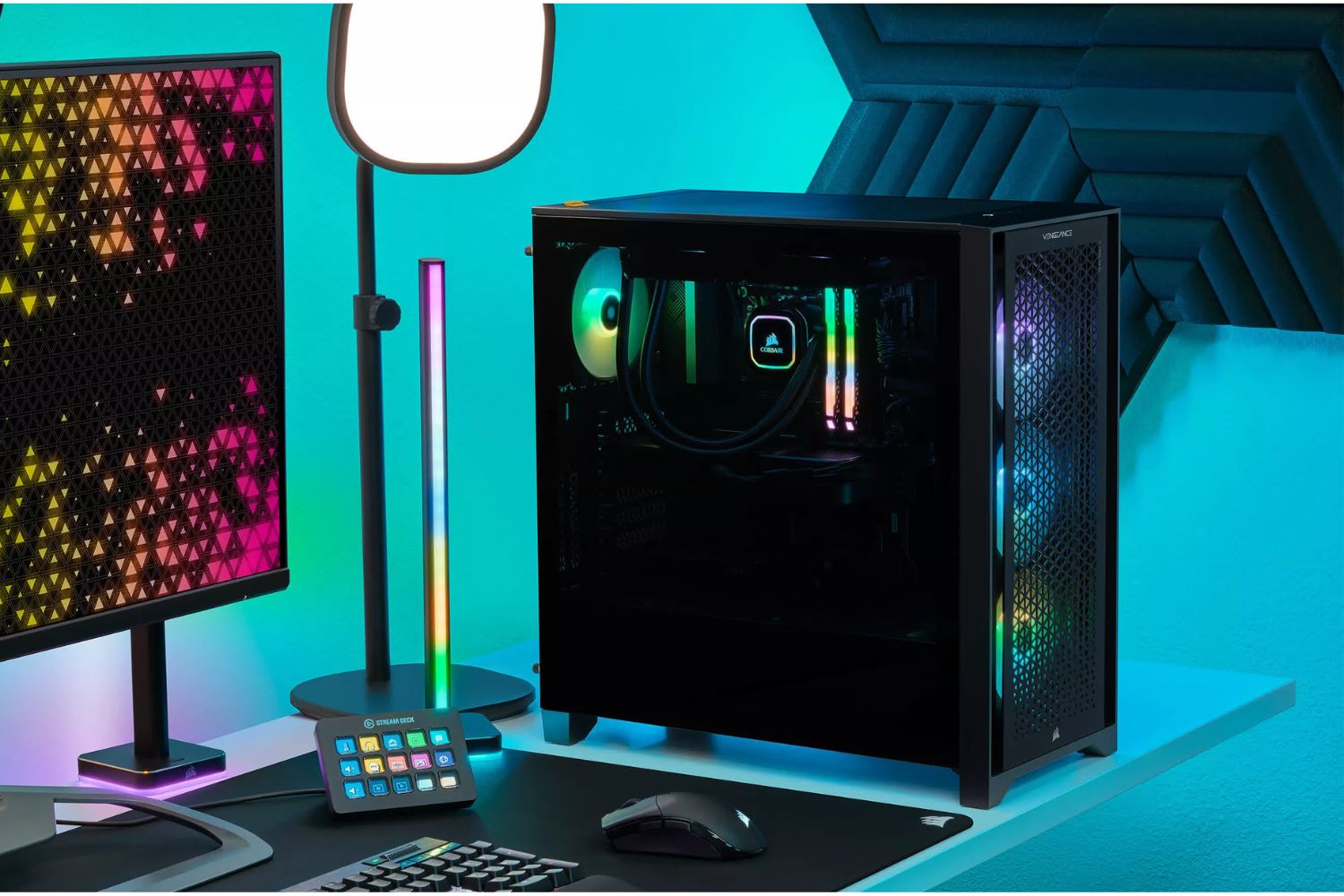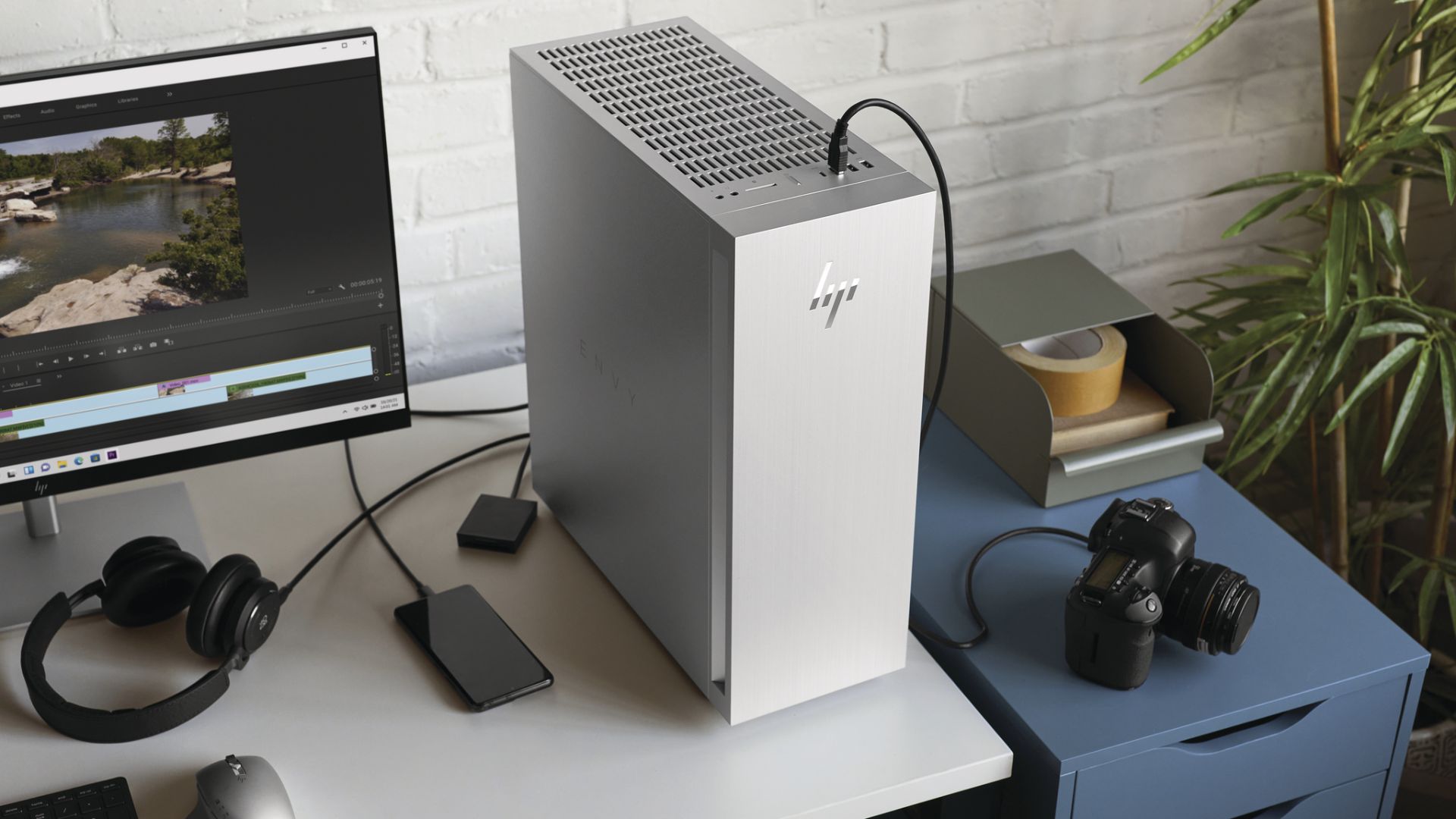Introduction
Welcome to the world of Mini Card Solid State Drives (SSDs), a compact storage solution that is revolutionizing the way we store and access our data. As technology continues to evolve, traditional storage solutions like hard drives are being replaced by smaller, faster, and more efficient options. And that’s where Mini Card SSDs come in.
Mini Card SSDs, also known as mSATA SSDs, are small form factor solid state drives that offer high performance and reliability in a compact package. They are designed to fit into devices with limited space, such as ultrabooks, tablets, and small form factor PCs.
But what sets Mini Card SSDs apart from traditional hard drives? Unlike mechanical hard drives that rely on spinning disks and moving parts, Mini Card SSDs use flash memory technology. This means they have no moving parts, resulting in faster data transfer speeds, lower power consumption, and improved durability. Mini Card SSDs also have a smaller physical footprint, making them ideal for devices where space is at a premium.
The availability of Mini Card SSDs has made it easier than ever to upgrade the storage capacity and performance of devices. Whether you need additional storage for your ultrabook or want to speed up loading times on your tablet, a Mini Card SSD can provide a significant boost in performance.
Throughout this article, we will explore the ins and outs of Mini Card SSDs. We’ll dive into how they work, their advantages over traditional hard drives, and their various applications. Whether you’re a tech enthusiast looking to upgrade your device or a professional seeking reliable storage solutions, this guide will help you understand the world of Mini Card SSDs and make informed decisions.
Definition of a Mini Card Solid State Drive
A Mini Card Solid State Drive, or Mini Card SSD, is a type of solid state storage device that is small in size and designed to fit into devices with limited space. They are commonly referred to as mSATA SSDs, where “mSATA” stands for mini-SATA.
Mini Card SSDs are characterized by their compact form factor, typically measuring around 30mm x 50mm. This small size allows them to be easily integrated into ultrabooks, tablets, and other devices where space is at a premium.
Unlike traditional hard drives that use mechanical components to read and write data, Mini Card SSDs rely on non-volatile flash memory technology. This means that they have no moving parts, resulting in faster data transfer speeds, improved power efficiency, and enhanced durability.
Mini Card SSDs connect to a device’s motherboard using the mSATA interface, which is a small connector that enables high-speed data transfer. The mSATA interface is an evolution of the popular SATA (Serial Advanced Technology Attachment) interface and is specifically designed for small form factor storage devices.
One of the key advantages of Mini Card SSDs is their versatility. They can be used as primary storage drives, replacing traditional hard drives, or as secondary storage drives to augment the existing storage capacity of a device.
In terms of storage capacity, Mini Card SSDs are available in a range of sizes, typically ranging from 32GB to 1TB or more. The choice of capacity depends on the specific needs of the user and the intended use of the device.
Overall, Mini Card SSDs offer a reliable and efficient storage solution for devices with limited space. Their small form factor, high performance, and low power consumption make them an ideal choice for ultrabooks, tablets, and other portable devices.
How does Mini Card SSD work?
A Mini Card Solid State Drive (SSD) operates using solid state storage technology, which is fundamentally different from the traditional mechanical hard drives. Instead of using spinning disks and moving read/write heads, Mini Card SSDs utilize NAND flash memory to store and retrieve data.
The NAND flash memory inside a Mini Card SSD is made up of memory cells that can retain data even without power. These cells are organized into pages, and multiple pages are grouped together into blocks. Each cell can store multiple bits of information, commonly referred to as multi-level cell (MLC) or triple-level cell (TLC) technology.
When data is written to a Mini Card SSD, an electrical charge is applied to the memory cells to store the information. To read data from the SSD, the charge on the memory cells is measured, allowing the information to be retrieved.
The process of writing data to a Mini Card SSD involves erasing the memory cells in a block and then programming them with the new data. However, due to the limited lifespan of NAND flash memory cells, a process called wear leveling is employed to distribute the data evenly across all memory cells. This helps to prevent certain cells from wearing out faster than others and extends the overall lifespan of the SSD.
Mini Card SSDs also utilize a controller, which acts as the brains of the storage device. The controller manages the read and write processes, as well as handles error correction, wear leveling, and data encryption. It ensures that data is stored and retrieved accurately and efficiently.
In terms of data transfer, Mini Card SSDs connect to the device’s motherboard using the mSATA interface. This allows for high-speed data transfer rates, ensuring fast and responsive performance. The mSATA interface also provides power to the Mini Card SSD, eliminating the need for a separate power source.
Overall, the solid state technology used in Mini Card SSDs enables faster data access, improved reliability, and lower power consumption compared to traditional hard drives. This makes Mini Card SSDs an ideal choice for devices where speed, efficiency, and durability are crucial.
Advantages of Mini Card SSD
Mini Card Solid State Drives (SSDs) offer numerous advantages over traditional hard drives. These advantages make them a popular choice for individuals and businesses looking for improved performance, reliability, and efficiency. Let’s explore some of the key advantages of Mini Card SSDs:
- Speed: Mini Card SSDs are significantly faster than traditional hard drives. The absence of moving parts allows for quicker data access and faster transfer speeds, resulting in improved boot times, application loading, and overall system performance.
- Reliability: Mini Card SSDs are highly reliable due to their solid state design. With no mechanical components to wear out or fail, they are less prone to physical damage and are more resilient to shock, vibration, and temperature fluctuations. This increased durability translates to a longer lifespan and reduced risk of data loss.
- Energy Efficiency: Mini Card SSDs consume less power than traditional hard drives. The absence of spinning disks and read/write heads reduces energy consumption, resulting in extended battery life for laptops and decreased power costs for desktop systems.
- No Noise: The lack of moving parts in Mini Card SSDs means they operate silently. Unlike hard drives that produce audible sounds from spinning disks, Mini Card SSDs offer a noise-free computing experience.
- Compact Size: Mini Card SSDs have a small physical footprint, making them ideal for devices with limited space, such as ultrabooks, tablets, and small form factor PCs. This compact size allows for greater flexibility in design and enables more portable and lightweight devices.
- Improved Data Security: Many Mini Card SSDs come with built-in data encryption capabilities, offering enhanced security for sensitive information. This ensures that your data remains protected, even if the device is lost or stolen.
The advantages of Mini Card SSDs make them an excellent choice for a wide range of applications. Whether you’re a professional requiring reliable storage for critical data, a gamer seeking faster load times, or a student looking to upgrade your laptop’s performance, Mini Card SSDs deliver the speed, reliability, and efficiency needed to enhance your computing experience.
Applications of Mini Card SSD
Mini Card Solid State Drives (SSDs) have a wide range of applications across different industries and devices. Their compact size, fast performance, and reliability make them a popular choice for various use cases. Let’s explore some of the key applications of Mini Card SSDs:
- Ultrabooks and Laptops: Mini Card SSDs are commonly used in ultrabooks and laptops to provide fast and efficient storage. They offer quick boot times, improved application loading, and overall snappy system performance. The compact size of Mini Card SSDs is particularly advantageous in ultrabooks, where space is limited.
- Tablets and Convertible Devices: Mini Card SSDs are also found in tablets and convertible devices, where low power consumption, small size, and fast performance are crucial. They enable quick access to data, smooth multitasking, and improved battery life.
- Gaming Systems: Gamers often choose Mini Card SSDs for their gaming systems to reduce load times in games and improve overall performance. The fast data transfer rates of Mini Card SSDs ensure smoother gameplay and faster level loading.
- Industrial and Embedded Systems: Mini Card SSDs are used in various industrial and embedded systems that require reliable and durable storage. Their resistance to shock, vibration, and extreme temperatures makes them suitable for use in rugged environments, such as medical equipment, automation systems, and transportation devices.
- Digital Signage and Multimedia Devices: Mini Card SSDs are utilized in digital signage systems and multimedia devices to store and stream high-definition content. Their fast read and write speeds ensure smooth playback of videos, images, and audio, without any lag or buffering.
- Consumer Electronics: Mini Card SSDs can be found in a variety of consumer electronics devices, including cameras, camcorders, and portable media players. They provide reliable and high-speed storage for capturing and accessing multimedia content.
- Server and Data Center Applications: Mini Card SSDs are also used in server and data center environments where fast access to data is crucial. They can be used as cache drives or for storing critical data, ensuring efficient data retrieval and improved server performance.
These are just a few examples of the wide-ranging applications of Mini Card SSDs. Their reliable performance, compact size, and fast data access make them suitable for a multitude of devices and industries, catering to the needs of professionals, gamers, and everyday users alike.
Mini Card SSD vs Traditional Hard Drives
When it comes to storage options, Mini Card Solid State Drives (SSDs) and traditional hard drives have distinct differences that can greatly impact performance, reliability, and overall user experience. Let’s compare Mini Card SSDs and traditional hard drives to better understand their strengths and weaknesses:
- Speed and Performance: Mini Card SSDs are significantly faster than traditional hard drives. They offer faster boot times, quicker application loading, and speedier data transfer rates. In contrast, hard drives rely on spinning disks and mechanical read/write heads, resulting in slower data access and reduced overall performance.
- Reliability and Durability: Mini Card SSDs have a solid-state design, which means they have no moving parts. This results in improved reliability and durability compared to traditional hard drives. Hard drives are more prone to mechanical failures, such as disk crashes from physical wear and tear.
- Power Consumption: Mini Card SSDs consume less power than traditional hard drives. Due to their lack of spinning disks and mechanical components, Mini Card SSDs require less energy, resulting in longer battery life for devices and lower power costs for desktop systems.
- Noise and Vibration: Mini Card SSDs operate silently since they have no moving parts. On the other hand, traditional hard drives produce audible sounds from the spinning disks, and they can also generate vibrations from the motors. This makes Mini Card SSDs a quieter and more vibration-free storage solution.
- Size and Form Factor: Mini Card SSDs have a compact form factor, making them ideal for devices with limited space. They are much smaller than traditional hard drives, enabling manufacturers to design thinner and lighter laptops, tablets, and other portable devices.
- Storage Capacity: Traditional hard drives currently offer higher storage capacities compared to Mini Card SSDs. While hard drives can provide terabytes of storage, Mini Card SSDs generally range from 32GB to 1TB. However, the gap is closing as Mini Card SSD capacities continue to increase.
- Cost: Traditional hard drives are generally more cost-effective than Mini Card SSDs when considering the price per gigabyte of storage. However, the cost of SSDs has been decreasing, making them more affordable over time.
Ultimately, the choice between a Mini Card SSD and a traditional hard drive depends on specific requirements and considerations. If speed, reliability, energy efficiency, and a smaller form factor are essential, Mini Card SSDs are the preferred choice. On the other hand, if high storage capacity and cost-effectiveness are critical, traditional hard drives may be more suitable. Assessing your needs and weighing the advantages and disadvantages of each storage technology will help you make an informed decision.
Choosing the right Mini Card SSD for your needs
When it comes to selecting the right Mini Card Solid State Drive (SSD) for your needs, there are several factors to consider. Each individual has unique requirements, and understanding these factors will help you make an informed decision. Here are some key considerations to keep in mind:
- Storage Capacity: Determine the amount of storage capacity you require. Consider the types of files you’ll be storing and the applications you’ll be using. If you work with large files or have extensive media collections, opt for a higher storage capacity. However, if you primarily use cloud storage or have limited storage needs, a smaller capacity may suffice.
- Performance: Consider the performance specifications of the Mini Card SSD. Look for high data transfer rates, fast read and write speeds, and low latency. These factors contribute to snappy system performance and quick file access, making your device more responsive.
- Reliability: Assess the reliability features of the Mini Card SSD. Look for technologies like error correction and wear leveling, which help to maintain data integrity and extend the lifespan of the drive. Check for the manufacturer’s warranty duration and any additional data protection features.
- Compatibility: Ensure that the Mini Card SSD is compatible with your device. Check the interface, typically mSATA, to ensure that it matches the connector on your device’s motherboard. Confirm that your device’s BIOS or firmware supports booting from an mSATA drive if you intend to use it as a boot drive.
- Budget: Consider your budget and the cost of the Mini Card SSD. While prices have become more affordable in recent years, SSDs generally still cost more than traditional hard drives. Set a budget range and compare the prices of different models with the features you require to find the best value for your investment.
- Brand and Reputation: Research and consider reputable brands known for their quality and reliability. Look for customer reviews and ratings to gauge the performance and longevity of the drive. Established brands often provide better support and warranty services.
By considering these factors, you can narrow down your options and find the Mini Card SSD that best suits your needs. Remember to prioritize the features that are most important to you, whether it’s capacity, performance, reliability, or compatibility. Taking the time to research and compare different models will ensure that you make the right choice and enjoy the benefits of a Mini Card SSD that aligns with your requirements.
How to install a Mini Card SSD
Installing a Mini Card Solid State Drive (SSD) is a straightforward process that can significantly enhance the performance of your device. Whether you’re upgrading your laptop or adding storage to your desktop, here’s a step-by-step guide on how to install a Mini Card SSD:
- Gather the necessary tools: Before you begin, ensure that you have the necessary tools, such as a small screwdriver set. Check the user manual of your device or consult the manufacturer’s website for any specific instructions or tools required for installation.
- Power off and disconnect your device: Power off your laptop or desktop and disconnect it from any power source. This will prevent any electrical mishaps and protect your device during the installation process.
- Locate the Mini Card SSD slot: Depending on your device, the Mini Card SSD slot may be located on the motherboard, underneath a panel, or inside the device’s casing. Refer to your device’s user manual for guidance on locating the slot.
- Prepare the Mini Card SSD: Remove the Mini Card SSD from its packaging and handle it carefully to avoid any static electricity discharge. If there is a protective sticker or cover on the connectors, gently remove it to expose the connectors for installation.
- Insert the Mini Card SSD into the slot: Align the Mini Card SSD with the slot and gently insert it at a slight angle. Ensure that the connectors on the SSD line up with the slot on the motherboard. Apply light pressure until the SSD is securely seated in the slot.
- Secure the Mini Card SSD: If there are screws or clamps provided with your Mini Card SSD, use them to secure the SSD in place. Tighten the screws firmly, but be cautious not to overtighten as it can damage the SSD or the slot.
- Reassemble your device: If you had to remove any panels or covers from your device during the installation process, carefully reattach them. Ensure that all connections are secure and that nothing is obstructing the Mini Card SSD.
- Power on your device: Once you have reassembled your device, connect it to a power source and power it on. The Mini Card SSD should be recognized by your device during the boot-up process.
- Format and initialize the Mini Card SSD: Depending on the operating system, you may need to format and initialize the Mini Card SSD to be recognized and utilized by your device. Consult the operating system documentation or online resources for instructions on how to format and initialize the Mini Card SSD.
Following these steps will guide you through the installation of a Mini Card SSD. Remember to handle the SSD with care, follow any specific instructions provided by the device manufacturer, and refer to the user manual for additional guidance. With a successfully installed Mini Card SSD, you can enjoy improved performance and increased storage capacity for your device.
Conclusion
Mini Card Solid State Drives (SSDs) have emerged as a game-changer in the world of storage solutions. With their compact size, fast performance, and reliability, Mini Card SSDs offer numerous advantages over traditional hard drives. They are revolutionizing the way we store and access data, whether it’s in ultrabooks, tablets, gaming systems, industrial equipment, or other devices with limited space.
Throughout this article, we have explored the definition of Mini Card SSDs, how they work, their advantages over traditional hard drives, their applications in various industries, and the factors to consider when choosing and installing one. We have seen that Mini Card SSDs provide faster speeds, enhanced reliability, lower power consumption, and reduced noise compared to traditional hard drives. They are more durable, offer improved data security, and are compatible with a range of devices.
When selecting a Mini Card SSD, it is crucial to consider factors such as storage capacity, performance, reliability, compatibility, budget, and the reputation of the brand. By understanding your specific needs and weighing these factors, you can make an informed decision and choose the Mini Card SSD that aligns with your requirements.
Installing a Mini Card SSD is a relatively simple process that involves locating the slot, properly inserting the SSD, securing it, and reassembling your device. While specific instructions may vary depending on the device, following the steps outlined in this article will guide you through the installation process.
In conclusion, Mini Card SSDs are an excellent storage solution that offers improved performance, reliability, and efficiency. Whether you’re a professional seeking faster data access, a gamer looking to reduce load times, or a student wanting to upgrade your device’s storage capacity, Mini Card SSDs provide a compelling choice. With their compact size, fast speeds, and reliability, they are revolutionizing the world of storage technology.







